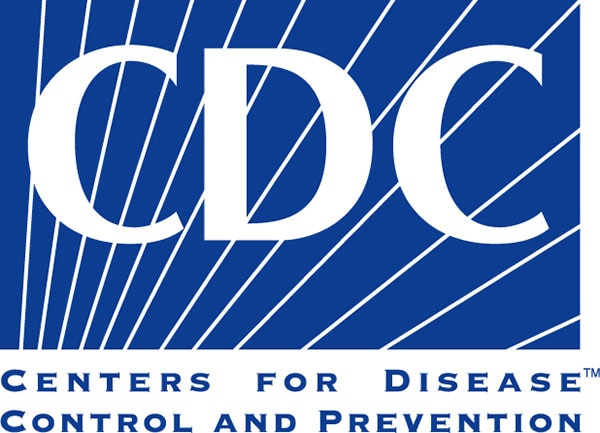Everyone should receive safe and effective pain care. The Centers for Disease Control and Prevention (CDC) understands that treating patients living with pain can be complex and that treatment is highly individualized.
CDC supports clinicians and their patient relationships. The newly released CDC Clinical Practice Guideline for Prescribing Opioids for Pain – United States, 2022 (2022 Clinical Practice Guideline) reflects CDC's commitment to helping people living with pain and supporting individualized patient care, safe and effective pain management options, and good communication between clinicians and patients. To support this effort, CDC developed resources to assist clinicians in implementing the guideline's recommendations in their practices. New resources will be added as they become available.
What You Need to Know
The 2022 Clinical Practice Guideline updates and replaces the 2016 guidelines. CDC followed a rigorous scientific process using the best available scientific evidence and obtained feedback from the public and independent subject matter experts to write this guideline.
Through the update process, we developed 12 voluntary recommendations to help clinicians provide pain care in outpatient settings for patients aged 18 years or older with acute pain, subacute pain, and chronic pain. The guideline is not applicable for pain management related to sickle cell disease, cancer-related pain treatment, palliative care, or end-of-life care.
A few key changes to the 2022 Clinical Practice Guideline include expansion of the clinical audience, clarification regarding dosing thresholds and tapering of doses, and the addition of guiding principles for implementing the recommendations. Of note:
The clinical audience has been expanded from primary care clinician to include clinicians who prescribe opioids in outpatient settings.
New guidance includes pain management recommendations for acute and subacute pain in addition to chronic pain.
There is revised and expanded guidance on opioid tapering, including carefully weighing the benefits and risks of continuing opioid therapy and a slower taper.
The recommendations in the 2022 Clinical Practice Guideline are voluntary and intended to support you as you provide individualized, flexible, patient-centered care as part of a multimodal and multidisciplinary approach to pain management. Special attention should be given to avoid misapplying this clinical practice guideline beyond its intended use.
How the Guidelines Can Help You
The 2022 Clinical Practice Guideline's broadened scope and updated recommendations help you and your patients make decisions together about how to manage pain. The guideline can help you:
Select an appropriate nonopioid therapy. Nonopioid therapies are at least as effective as opioids are for many common types of acute pain (including low back pain, neck pain, pain related to other common musculoskeletal conditions or to minor surgeries or dental procedures, kidney stone pain, and headaches).
Weigh the benefits and risks of opioid vs nonopioid pain treatments. There is guidance for treating acute (< 1 months' duration) and subacute (1-3 months' duration) pain.
Select appropriate treatment for chronic pain. The new guideline mostly reinforces the 2016 guideline recommendations for the use of opioids for treating chronic pain, with some key exceptions to dosing thresholds and tapering guidance.
Determine an opioid dosage for your patient. The guideline provides general dosing principles rather than specific dosage thresholds (eg, avoiding increasing dosage above levels likely to yield diminishing returns in benefits relative to risks). The goal of this distinction is to avoid using the guideline to create overly restrictive policies and help support clinicians and patients in making individualized decisions.
Decide when to change dosage or discontinue opioids. CDC provides guidance on assessing the benefits and risks for continued opioid use and determining whether or when to taper opioid dosage for your patients who are already receiving opioids.
The guideline also includes a set of guiding principles to help you implement the recommendations and support your efforts to treat pain with your patients. The complete recommendations and implementation considerations can be found at 2022 Clinical Practice Guideline.
Use the Guidelines to Help Your Patients
The 2022 Clinical Practice Guideline aims to ensure equitable access to pain treatment that improves the lives of persons living with pain and reduces the risks associated with opioid pain therapy. CDC continues to develop new tools and resources to help you and your colleagues implement the guidance in your practice or health system. We support you and your patients and hope that this guidance will help you provide safe, effective, individualized, and informed pain care for your patients living with pain.
Resources:
2022 Clinical Practice Guideline for Prescribing Opioids for Pain
CDC Opioid Prescribing Resources for Healthcare Professionals
Follow CDC on Twitter
Follow Medscape on Facebook, Twitter, Instagram, and YouTube
Credits:
Lead image: Monkey Business Images / Dreamstime
Public Information from the CDC and Medscape
Cite this: What You Need to Know About CDC's Updated Clinical Practice Guideline for Prescribing Opioids - Medscape - Jan 18, 2023.










